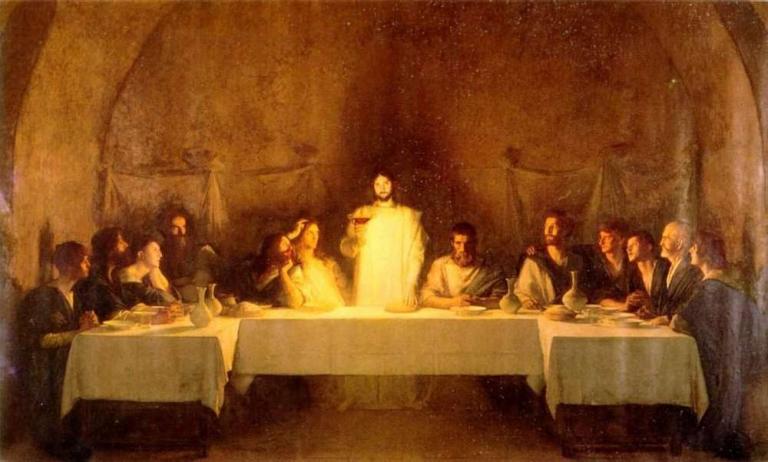The Bible is extraordinarily complex. While the Reformers rightly insisted that its basic message of salvation could be understood by the simplest of sinners, they also believed that its preachers needed extensive training to be able to understand its many parts and profundities. They knew that it is impossible to interpret the Bible rightly without having the right framework or lens through which to read it. The little stories could not be understood without knowing the Big Story into which they fit. Using the wrong Big Story would cause Christians to misinterpret the hundreds of little stories in the Bible, not to mention the meaning of the myriads of details from ancient cultures in ancient times.
For this reason it is essential that we get the big picture right. As I mentioned in a previous post, the new Christian Zionism insists that the story of Israel is central to the story of salvation. The latter is fundamentally misunderstood and distorted when it omits Israel and her story with God. The sheer size of the Hebrew Scriptures, which dwarf the New Testament, should have signaled this to the historic Church. But so does the gospel story in the New Testament show that Israel is at the center.
The very first gospel—Matthew—opens with a genealogy that proves that Jesus is descended from Abraham, the first Jew, through forty-two generations of Jews. Luke’s gospel also contains a genealogy (3. 23-38) which proves that Jesus came from a long line of Jews going back to Abraham, and then all the way back to Adam. Apparently both Matthew and Luke believed it important to show that Jesus was connected to the history of Israel.
In her Magnificat, Mary suggests that the birth of the messiah will be significant not only for all future “generations” but particularly for the history of Israel: this will show that God “has helped his servant Israel, in remembrance of his mercy, according to the promise he made to our ancestors, to Abraham and to his descendants forever” (Luke 1.54-55). If the Incarnation was supposed to turn the focus away from Israel, as the supersessionist story has suggested, Mary did not get the memo. Her son would fulfill God’s promise which was made not to the whole human race but to the first Jew and all his Jewish descendants. Of course we know that this fulfillment brought the promise of salvation to the world, but Mary here mentioned only the promise to the Jews.
Paul has long been cast as the apostle to the Gentiles, who supposedly got the focus off Judaism and showed that the gospel was really a universal message for all. Starting with Paul, it has often been said, the world was shown that the days of Jewish particularity were over, and the days of non-Jewish universalism had begun. God’s covenant with the Jews was done, and he had transferred that covenant to the Church. No longer would God be concerned with the Jews. They had forfeited their covenant because they had rejected the messiah, Jesus.
[This is what Kendall Soulen has termed the “punitive” version of supersessionism, the idea that God made a new covenant with the Church that supersedes His old covenant with Israel because God was punishing Israel for not accepting her messiah. Soulen’s two other kinds of supersessionism are “economic” (that in God’s economy or administration of the history of salvation, Israel’s purpose was to prepare for the messiah, and so once he came, Israel had no more purpose) and “structural” (the history of salvation is so structured as not to need Israel in any integral way, except to serve as a negative example).Despite Paul’s having been read this way for centuries, his letters tell a different story. In Romans 9 and 11 he laments his fellow Jews who have not accepted Jesus as messiah. He says that they cause him “great sorrow and unceasing anguish” (9.2). Yet he says “the covenants” still “belong” to them (9.4), and even though they have become “enemies of the gospel,” they still “are beloved” because of their “election” which is “irrevocable” (11.28-29; my emph.).
Galatians is the letter which is most often used to prove that Paul has dispensed with Jewish law in favor of a Church that has left Israel behind. Yet even here he says the gospel is all about “the blessing of Abraham . . . com[ing] to the Gentiles” (3.14) because “the promises [of blessing] were made to Abraham and to his offspring” (3.16) so that getting saved means being in Abraham’s family: “If you belong to Christ, then you are Abraham’s offspring, heirs according to the promise” (3.29). In other words, the gospel means getting connected to Israel’s history, not getting away from it. Yet supersessionism—the idea that the Church has superseded Israel because God’s covenant with Israel has been superseded or transferred to others—suggests that Israel has been left behind. Galatians says otherwise.
The New Testament develops what we have just seen in the genealogies and the Magnificat and Galatians—the intimate connection between Israel and the gospel. This is the constellation of connections that show that Israel is essential not only to eschatology (the old Christian Zionism) but to soteriology (the new Christian Zionism). Israel is critical to not only the future (the old) but also to our past and present (the new). Not only to where Christians will be (the old) but to what they are (the new).
This constellation of connections is vivid in the New Testament, especially in its last book, Revelation. In that book, usually dated near the end of the first century, the new earth is centered in Jerusalem, whose twelve gates are inscribed with the names of the twelves tribes of Israel (21.12). So we can be confident that this Zionist vision, which the middle chapters of this book will show to have been prevalent in the New Testament, continued through at least the end of the first century.
But in the mid-second century, when the synagogue was still very attractive to many Jesus-believing Jews, some of the latter were tempted to jettison their new devotion to Jesus. Early church leaders, Gentiles who were unfamiliar with their new faith’s Jewish roots, responded by stressing the superiority of Jesus’ law to the Mosaic law. Their apologetic against the synagogue was so successful that their new version of salvation history—which suggested that God had transferred the covenant from Israel to the Church—became dominant.
As a result, most Christians read the Bible with the wrong Big Story as their framework.










